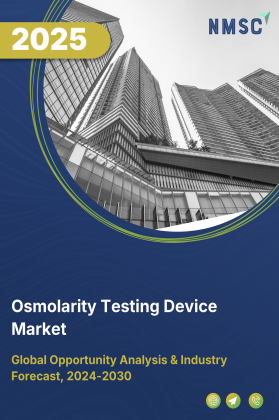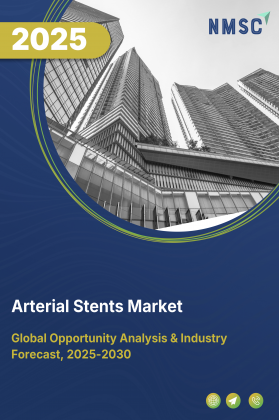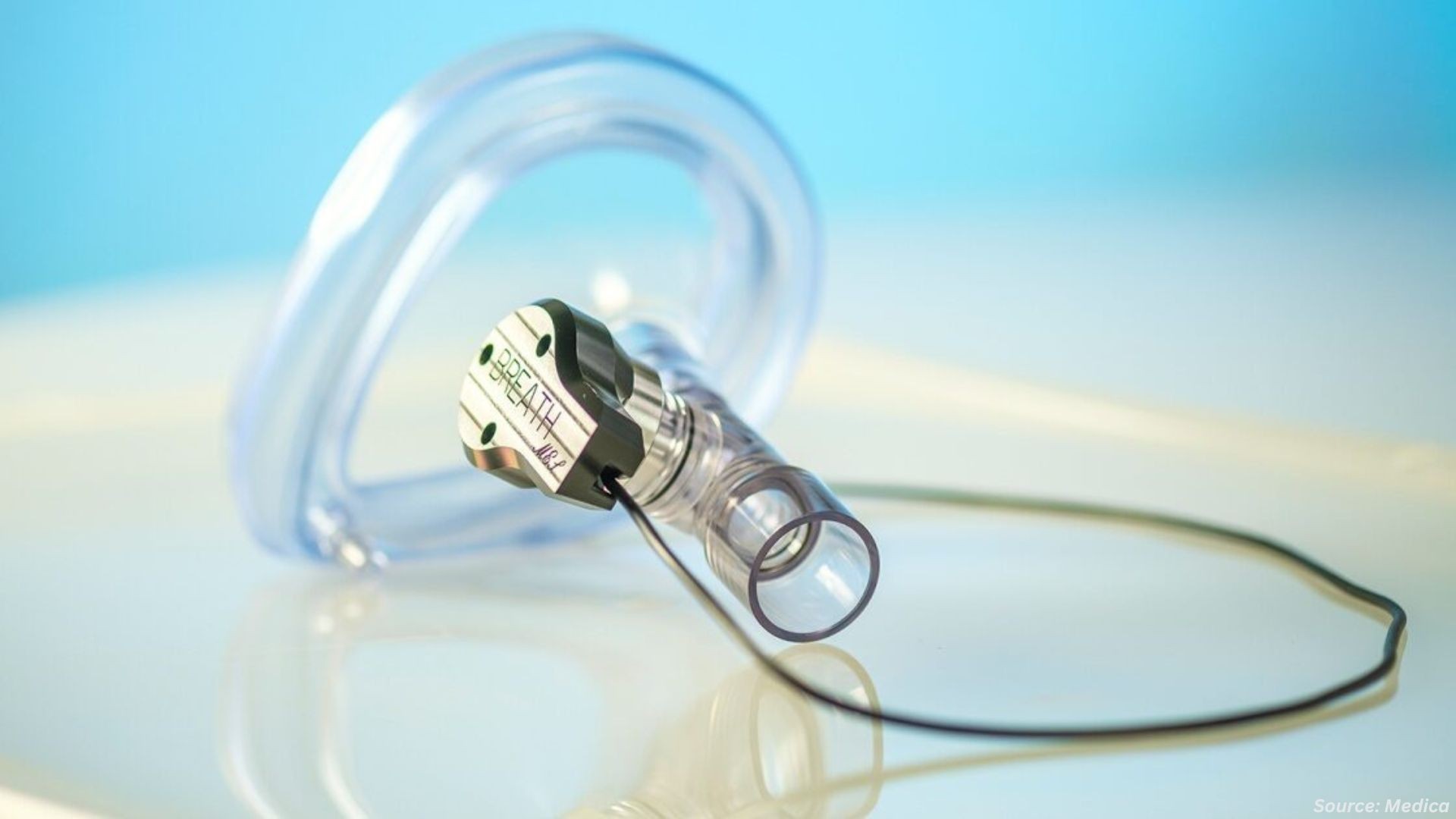
Echocardiogram Market by Product Type (Echocardiography Systems, Probes and Transducers, Accessories and Consumables), by Technology (2D, 3D, 4D, Doppler, and M-mode Echocardiography), by Portability (Fixed and Mobile), by Application (Congenital, Valvular, Coronary, Heart Failure, Pericardial Disease, Pulmonary Hypertension and Others), and by End User (Hospitals, Diagnostic Centers, Cardiology Clinics, and ASCs) – Global Opportunity Analysis and Industry Forecast, 2025–2030
Industry Outlook
The global Echocardiogram Market size was valued at USD 2.61 billion in 2024, and is expected to be valued at USD 2.81 billion by the end of 2025. The industry is projected to grow, hitting USD 4.09 billion by 2030, with a CAGR of 7.80% between 2025 and 2030.
The market is growing rapidly, driven by increasing prevalence of cardiovascular diseases, rising awareness of early diagnosis, and continuous technological advancements in cardiac imaging. Healthcare providers and patients are increasingly adopting echocardiography for its non-invasive, real-time, and highly accurate assessment of heart function and structure.
The integration of AI-powered image analysis, 3D and 4D imaging, and portable or handheld ultrasound devices is enhancing diagnostic precision and accessibility across hospitals, clinics, and home care settings. Growing demand for point-of-care diagnostics, coupled with an ageing population and rising healthcare expenditure, is further boosting the echocardiogram market expansion. By combining innovation, accuracy, and convenience, the sector is addressing evolving clinical needs while advancing cardiovascular care and patient outcomes.
What are the Key Trends in Echocardiogram Market?
How are Portable and Handheld Echocardiography Devices Reshaping Point-of-Care Cardiology?
Handheld and portable echo devices have matured in image quality and connectivity, moving from triage tools to diagnostic support in emergency, ICU, and outpatient settings. Companies emphasised portable portfolio growth in 2024 and incorporated AI for automated views and measurements.
Analysis reveals that point-of-care echo reduces time-to-diagnosis, supports decentralised cardiac screening and drives adoption among non-cardiologist clinicians. Actionable insight: manufacturers should invest in ruggedised, battery-efficient devices with cloud reporting and tele-echo workflows; health systems should pilot handheld fleets for emergency and primary care triage to reduce unnecessary advanced imaging.
How is Demand for Advanced 3D/4D and Strain Imaging Creating Upgrade Cycles in Hospitals?
The clinical value of 3D/4D echo and myocardial strain imaging for valve assessment, structural interventions, and heart failure management is driving hospital upgrades from 2D to advanced systems. Vendors reported increased uptake in tertiary centres and structural heart programs in 2024, where 3D transoesophageal and transthoracic imaging are prerequisites for transcatheter interventions.
Analysis indicates that institutions performing structural heart procedures prioritise consoles that integrate 3D volume rendering and interventional guidance, creating a two-tier market: high-end systems for advanced centres and mid-range/portable units for screening and follow-up.
Actionable insight: suppliers should bundle procedural-grade TEE probes and multi-modal guidance software with service agreements and training to capture interventional market share.
How are the Global Cardiovascular Disease Burden and Screening Policy Influencing Regional Equipment Demand?
According to WHO, cardiovascular disease remains the leading global mortality cause; ageing populations and rising risk factors in developing markets expand the addressable population for echo screening and chronic disease management. Public health bodies (AHA/WHO/CDC) data show persistent high CVD prevalence, which drives routine imaging referrals, heart failure surveillance and preoperative assessments. Analysis shows that high-income markets emphasise premium features (3D/strain/AI), while lower-income regions prioritise cost-effective portable devices and training.
Actionable insight: vendors should adopt tiered product strategies, premium integrated systems for tertiary centres and robust, low-cost handheld/portable units with remote training and tele-interpretation partnerships for emerging markets.
The chart illustrates the proportion of people aged 65 and above as a percentage of the total population in 2024 for selected countries. Japan leads with the highest elderly population at 29.6%, followed by Italy (24.2%), Germany (22.8%), and Spain (19.1%), while South Korea, despite rapid demographic changes, has the lowest among the depicted nations at 15.1%. This data highlights significant ageing trends, especially in developed countries, with implications for labour markets, healthcare, and social support systems.
A growing elderly population creates increased demand for healthcare services, assistive technologies, and specialised care solutions. Markets focused on elder care, including medical devices, remote monitoring, and senior housing, stand to benefit from these demographic shifts as governments and private sectors invest to address the needs of ageing societies.
What are the Key Market Drivers, Breakthroughs, and Investment Opportunities that will Shape the Echocardiogram Market in the Next Decade?
The echocardiogram market demand is driven by rising cardiovascular disease prevalence, broader screening and monitoring needs for heart failure and valvular disease, and technological advances, notably AI, 3D/4D imaging and handheld portability. Company filings for 2024 confirm vendor investment in AI and ultrasound R&D to address clinician needs for throughput and diagnostic confidence.
Simultaneously, structural heart interventions and heart failure clinics are creating durable demand for procedural-grade echo systems and TEE probes. Nevertheless, adoption faces constraints: reimbursement variability across markets, long hospital purchasing cycles, regulatory clearance timelines for AI algorithms, and sonographer workforce shortages that limit exam capacity.
These issues create opportunities for vendor models emphasizing training, service, and outcome data to justify capital expenditures. Strategic investors should favour companies with validated clinical data, regulatory approvals, and scalable service footprints.
Growth Drivers:
How will Rising Heart Failure and Structural Intervention Volumes Drive System Upgrades?
The increasing prevalence of heart failure and the growing number of transcatheter structural heart interventions are reshaping echocardiography requirements across hospitals and imaging centers. Clinical protocols now emphasize advanced quantitative techniques such as strain imaging and 3D echocardiography for valve sizing, function monitoring, and post-procedure evaluation. This shift is accelerating upgrades from legacy 2D systems to high-end consoles capable of real-time 3D and intra-procedural guidance.
Vendors offering integrated strain analysis, fusion imaging, and interventional support tools are gaining procurement preference. One-sentence insight: vendors should align product roadmaps to interventional lab requirements and offer bundled training and intra-operative support to accelerate adoption.
The chart displays healthcare expenditures by country in 2024, measured in USD million. Denmark leads with the highest healthcare spending at USD 6,432.4 million, closely followed by Germany and the UK, while Spain and Italy have comparatively lower expenditures. These figures highlight significant resource allocation to healthcare across Western European countries.
High levels of healthcare expenditure directly support the echocardiogram market growth, as greater financial resources enable hospitals and clinics to invest in advanced diagnostic equipment and expand cardiac care services. Countries like Denmark and Germany, with substantial healthcare budgets, are likely to drive increased adoption of echocardiography systems, contributing to technological advancements and market expansion in the cardiac imaging sector.
How will AI-Driven Automation and Remote Reporting Expand Capacity and Reduce Costs?
Artificial intelligence (AI) is transforming echocardiography by automating complex measurements, improving reproducibility, and reducing examiner dependency. Automated workflows enable general practitioners and sonographers to acquire standard-quality images, while cardiologists remotely interpret studies through cloud-based or tele-echo platforms. These AI- and cloud-driven models allow hospitals to centralize reporting hubs, enhancing throughput and optimizing personnel utilization.
Cost per study decreases as productivity rises, particularly in health systems facing staff shortages. Vendors integrating AI quantification tools with secure, interoperable tele-imaging solutions stand to capture growing institutional demand. One-sentence insight: providers should deploy validated AI suites and tele-echo workflows to expand service reach and optimize sonographer utilization.
The chart highlights the adoption of AI in organizations, measuring the percentage of respondents using AI in at least one function from 2017 to 2024. Usage rises dramatically from 20% in 2017 to 78% in 2024, despite moderate fluctuations between 2019 and 2022. The recent sharp increase suggests accelerated integration of AI capabilities across business functions.
This surge in AI adoption impacts a wide range of markets by fostering automation, data-driven decision-making, and efficiency improvements. For industries like healthcare, manufacturing, and e-commerce, greater AI uptake leads to enhanced operational effectiveness, innovation in digital solutions, and new business models that rely heavily on intelligent systems for a competitive edge.
Growth Inhibitors:
What Regulatory and Reimbursement Barriers Could Constrain Market Expansion?
Novel AI algorithms and new handheld diagnostic claims require regulatory clearances, which lengthen time-to-market and increase validation costs. Reimbursement codes and payment rates for point-of-care and advanced echo quantification vary widely across countries, reducing financial incentives for some purchasers.
Hospitals demand health-economic data showing improved outcomes or cost offsets before capital purchases. One-sentence insight: vendors should pursue early regulatory engagement, generate prospective health-economic evidence, and work with payers to secure reimbursement pathways for high-value echo services.
Where are the Most Compelling Investment Opportunities in the Echocardiography Ecosystem?
Attractive investments include validated AI vendors that reduce exam time and increase measurement reproducibility; handheld/portable device makers targeting point-of-care and emerging markets; and tele-imaging platforms enabling centralized interpretation. Companies combining hardware, software and service (training, remote reading) create sticky recurring revenues.
Public company 2024 filings show capital allocated to ultrasound and AI development, indicating investor appetite for integrated imaging solutions. One-sentence insight: prioritize investments in providers with regulatory-cleared AI, proven clinical validation, and partnerships with hospital networks for rapid scale.
How is the Echocardiogram Market Report Segmented, and What are the Key Insights from Segmentation Analysis?
By Product Type Insights
Is Echocardiography Systems the Dominant Product Subsegment in 2025?
Based on product type, the market is segmented into echocardiography systems, probes and transducers, and accessories and consumables. The echocardiography systems segment includes cart-based systems, portable systems, and handheld devices. Probes and transducers are classified into transthoracic, transesophageal, intracardiac, fetal, and stress probes. Accessories and consumables include ultrasound gels, probe covers, ECG leads, mounting stands and carts, and cables and connectors.
Echocardiography systems, cart-based consoles, portable laptops and handheld devices represent the largest revenue pool due to high unit prices for advanced consoles and steady replacement cycles. Cart systems remain essential for hospitals and interventional labs because they host 3D/TEE, surgical guidance and advanced Doppler modules.
Portable and handheld devices are rapidly increasing procedure volumes in point-of-care settings; their lower price points expand market penetration. Analysis shows a tiered purchasing pattern: tertiary centers buy premium consoles with 3D/TEE, while community hospitals and clinics purchase mid-range and portable units. Vendors should maintain tiered portfolios and bundled service offerings to capture both premium and volume segments.
By Technology Insights
Is Doppler and Strain Imaging Leading the Technology Segmentation in 2025?
Based on technology, the market is segmented into 2D echocardiography, 3D echocardiography, 4D echocardiography, Doppler echocardiography, and M-mode echocardiography. Doppler echocardiography is further divided into color Doppler, continuous wave Doppler, pulsed wave Doppler, and tissue Doppler imaging.
Doppler modalities plus advanced quantitative tools such as myocardial strain imaging and 3D/4D rendering constitute high-value technology subsegments. Doppler remains essential for flow assessment, while strain imaging delivers prognostic value in heart failure and chemotherapy cardiotoxicity surveillance, increasing clinical adoption. Analysis indicates that health systems performing advanced heart failure management and oncology cardio-surveillance mandate strain capability, pushing upgrades.
Actionable insight: vendors should validate strain algorithms against reference standards and secure regulatory clearances to gain preference in clinical programs.
By Portability Insights
Are Fixed Systems Dominating Purchases While Mobile Systems Grow Fastest?
Based on portability, the market is segmented into fixed systems and mobile systems.
Fixed cart systems remain dominant in hospital capital spending for interventional and diagnostic cardiology due to their capability set and probe ecosystem. However, mobile and handheld systems show the fastest unit growth because of point-of-care adoption in ER, ICU and primary care, and because they unlock previously unmet demand in remote and resource-limited settings. Hospitals adopt a hybrid fleet strategy, high-end carts for procedure centres and portable/handhelds for triage and bedside follow-up. Vendors should price and position devices accordingly and support remote reporting workflows.
By Application Insights
Is Cardiac Imaging for Heart Failure and Valvular Disease the Dominant Application?
Based on application, the market is segmented into congenital heart disease, valvular heart disease, coronary artery disease, cardiomyopathy, heart failure, pericardial disease, pulmonary hypertension, and others.
Heart failure management and structural/valvular disease assessment are leading clinical applications driving echocardiography use owing to guideline-driven surveillance, pre- and post-procedure imaging, and the need for precise quantification (EF, volumes, valve gradients). Growth in transcatheter valve programs increases demand for intra-procedural TEE and 3D imaging. Analysis shows referral patterns concentrate advanced imaging in tertiary centres while routine heart failure monitoring expands into outpatient imaging centres and community hospitals. Vendors should align product messaging to support guideline-driven measurement packages and interventional workflows.
By End User Insights
Is Hospital and Diagnostic Imaging Centres the Dominant End-User in 2025?
Based on end user, the market is segmented into hospitals, diagnostic and imaging centres, cardiology clinics, ambulatory surgical centres, and others.
Hospitals and diagnostic imaging centres account for the majority of revenue because they purchase high-end consoles, advanced probes and recurring service agreements. Cardiology clinics and ambulatory surgical centres increasingly acquire mid-range and portable systems for outpatient follow-up and screening, expanding market breadth. Analysis suggests that strong service networks, training programs and fast-response maintenance are decisive for hospital procurement. Vendors should bundle training, on-site service and outcome data to support capital approvals.
Regional Outlook
The echocardiogram market share is geographically studied across North America, Europe, Asia Pacific, Latin America and the Middle East & Africa and each region is further studied across countries.
Echocardiogram Market in North America
North America leads the global market, supported by high procedure volumes, robust reimbursement policies, and widespread adoption of advanced imaging technologies such as 3D echocardiography, strain imaging, and AI-driven quantification tools. The region’s well-developed healthcare infrastructure and large tertiary centres foster continuous upgrades to high-end systems.
According to 2024 vendor disclosures, major players like GE HealthCare are investing in AI-integrated ultrasound platforms and tele-echo pilot programs to extend access in rural regions. Additionally, growing demand for remote cardiac monitoring and portable systems supports innovation across care settings. One-sentence insight: the North American market’s growth depends on integrating AI tools and remote access networks to meet expanding cardiac imaging demand.
Echocardiogram Market in the United States
The U.S. represents the largest and most technologically advanced market for cardiac ultrasound, driven by high rates of cardiovascular disease, expanding heart failure programs, and strong interventional cardiology volumes. Structured reimbursement and capital investment cycles guide hospital purchasing patterns, while outpatient centers increasingly adopt portable and handheld devices.
AI-enabled automation and tele-echo systems are gaining traction across large integrated health systems, optimising workflow and reducing examiner dependency. With major emphasis on diagnostic efficiency and patient throughput, U.S. providers prioritise validated systems with strong vendor training and support networks.
One-sentence insight: continuous integration of AI automation and handheld imaging will sustain U.S. market momentum.
Echocardiogram Market in Canada
Canada’s market is characterised by evidence-based procurement and cost-effectiveness evaluations within its universal healthcare framework. Advanced imaging technologies such as 3D and strain echocardiography are largely concentrated in tertiary and academic hospitals, while provincial programs pilot handheld and point-of-care devices for rural and Indigenous communities.
National health initiatives increasingly explore tele-echo and AI tools to address cardiologist shortages and improve diagnostic reach. Vendors competing in Canada focus on demonstrating clinical utility and economic value through real-world data and partnerships with regional health authorities. One-sentence insight: growth in Canada’s market hinges on affordable innovation and tele-echo integration for underserved regions.
Echocardiogram Market in Europe
Europe’s market is shaped by stringent regulatory standards, sustainability goals, and a strong emphasis on clinical validation. Western Europe maintains a mature adoption of high-end 3D and TEE systems for structural heart and interventional procedures, while Eastern Europe represents an emerging opportunity for cost-effective portable systems.
Key players such as Siemens focus on expanding cloud-enabled solutions and harmonised imaging workflows across EU hospital networks. Increasing funding for digital health and remote cardiac diagnostics further enhances accessibility and integration. One-sentence insight: European growth relies on balancing compliance-driven innovation with affordability for emerging regions.
Echocardiogram Market in the United Kingdom
The U.K. market reflects a dual structure: centralised NHS procurement focused on cost-effectiveness and growing adoption of advanced echo technologies within tertiary cardiology centres. While budget constraints limit rapid equipment turnover, specialised cardiac units increasingly invest in 3D, TEE, and AI-assisted systems for complex procedures.
The government’s digital health initiatives, including telecardiology pilots, enhance access to cardiac imaging across community hospitals and remote regions. Partnerships between NHS trusts and vendors support workforce training and standardisation of protocols. One-sentence insight: sustained U.K. growth depends on value-driven procurement models and integration of tele-echo platforms to expand diagnostic access.
Echocardiogram Market in Germany
Germany’s strong hospital network, advanced cardiology infrastructure, and manufacturing excellence underpin high demand for handheld/portable echo devices. The country’s cardiac centers are early adopters of strain imaging, 3D echo, and interventional guidance software for transcatheter procedures.
Siemens and other major vendors maintain local service and R&D capabilities to support clinical validation and workflow integration. Procurement decisions emphasize quality, accuracy, and compliance with European standards. The high volume of structural and heart failure cases ensures steady replacement and upgrade cycles. One-sentence insight: Germany remains a core European hub for premium echo system innovation and procedural imaging adoption.
Echocardiogram Market in France
France’s market is supported by a robust hospital network and government investment in cardiac imaging infrastructure. Tertiary centers lead in deploying advanced echo systems for diagnostics, therapy guidance, and cardiac monitoring, while outpatient facilities adopt portable and mid-tier models for follow-up care.
Cardiac imaging is central to France’s heart disease prevention programs, emphasizing early detection and longitudinal tracking. Collaboration between academic hospitals and technology providers drives adoption of AI-assisted measurement tools and 3D visualization. One-sentence insight: the French market’s progression is driven by imaging centrality in national cardiac care and government-funded innovation initiatives.
Echocardiogram Market in Italy
Italy demonstrates a balanced mix of high-end and mid-range echocardiography adoption. Leading cardiology centers employ 3D and procedural echo systems for structural interventions, while regional and private hospitals rely on portable consoles for follow-up and screening. Domestic and European vendors, including Siemens, cater to diverse needs through modular platforms and remote service support.
National healthcare reforms and regional funding programs promote modernization of imaging infrastructure, particularly in southern regions. One-sentence insight: Italy’s echo market expansion depends on regional funding parity and widespread adoption of interoperable imaging systems.
Echocardiogram Market in Spain
Spain’s market benefits from a well-integrated cardiology network and government support for digital diagnostics. Hospitals and regional health systems increasingly use portable and mid-range devices to expand community access. Tele-echo and mobile screening units are gaining traction in rural areas, aligning with national cardiovascular prevention initiatives. As tertiary hospitals upgrade to 3D and AI-enabled systems, vendors are forming partnerships to provide tailored service models. One-sentence insight: Spain’s growth is driven by tele-echo expansion and modernisation of public cardiac imaging programs.
Echocardiogram Market in the Nordics
The Nordic countries, Sweden, Norway, Denmark, and Finland, prioritise digital health, remote diagnostics, and sustainability in healthcare technology procurement. Echocardiography adoption aligns closely with heart failure and population screening programs. Hospitals leverage telemedicine and AI-powered quantification tools to overcome workforce shortages and ensure consistent reporting quality. Portable and handheld systems are increasingly used in rural and primary care settings. Public funding supports research collaborations between hospitals and imaging vendors.
One-sentence insight: Nordic market growth depends on the integration of AI-enabled tele-echo systems and outcome-based healthcare models.
Echocardiogram Market in Asia Pacific
Asia-Pacific represents the fastest-growing market globally, driven by the rising burden of cardiovascular disease, rapid hospital infrastructure expansion, and technology penetration across both urban and rural settings. Countries like China, India, Japan, and South Korea lead demand through large tertiary centers, while Southeast Asia and Oceania show accelerating adoption of portable and handheld systems. Vendors including Siemens and Philips report strategic investments in AI-enabled imaging and cloud-based tele-echo networks to meet regional needs. Government initiatives promoting preventive cardiology and universal screening programs further support demand.
Echocardiogram Market in China
China’s vast healthcare network and increasing cardiovascular disease prevalence make it a core market for echocardiography expansion. Domestic manufacturers compete with global brands by offering affordable systems with localized interfaces and service networks. Large tertiary hospitals prioritize premium 3D and TEE systems for structural interventions, while community hospitals adopt portable consoles for mass screening. Government incentives for digital healthcare and AI integration further encourage modernization. Vendor success depends on after-sales service coverage and partnerships with regional distributors.
Echocardiogram Market in Japan
Japan’s market is defined by precision medicine, advanced hospital infrastructure, and rigorous device validation processes. Major cardiac centers extensively use 3D, strain, and interventional echo systems to guide complex cardiac procedures. Procurement emphasizes proven reliability, imaging accuracy, and long-term service support. Local manufacturers and global vendors collaborate closely with hospitals to develop tailored clinical software and user interfaces. Although qualification cycles are long, once approved, systems enjoy sustained demand.
Echocardiogram Market in India
India’s market is expanding rapidly due to a growing private healthcare sector, urbanization, and increased cardiovascular awareness. Portable and mid-tier systems dominate sales as diagnostic centers and hospitals seek affordable, flexible solutions. Public-private partnerships and tele-echo initiatives target early detection in rural populations. Vendors such as Philips and Siemens are investing in localized production and training programs to build capacity.
Echocardiogram Market in South Korea
South Korea’s advanced healthcare infrastructure and leadership in electronics and AI integration position it as a key adopter of high-end echocardiography systems. Major hospitals use 3D and strain imaging for structural and interventional procedures. Vendor competition centres on workflow automation, connectivity, and imaging precision. The country’s focus on technology-enabled healthcare creates opportunities for AI and cloud-based echo solutions.
Echocardiogram Market in Australia
Australia demonstrates high adoption of both advanced and portable echocardiography systems, supported by a strong network of cardiology centres and telehealth-enabled regional hospitals. The country’s emphasis on preventive healthcare and early cardiac screening supports steady demand for point-of-care imaging. Universities and hospital collaborations drive innovation in AI-assisted echo interpretation.
Echocardiogram Market in Latin America
Latin America’s market is growing moderately, driven by private hospital investments, urbanisation, and increasing cardiovascular awareness. Brazil and Mexico lead adoption, while smaller markets depend on regional distributors and refurbished systems. Vendors focus on training, service reliability, and financing solutions to address cost barriers.
Echocardiogram Market in the Middle East & Africa
The Middle East and Africa show mixed adoption levels, with the Gulf countries investing heavily in advanced hospital infrastructure and Africa gradually expanding access through donor programs and tele-imaging. In the Middle East, tertiary hospitals increasingly adopt AI-assisted and 3D systems for cardiology programs. Africa’s demand focuses on portable and low-cost systems for diagnostic outreach.
Competitive Landscape
Who are the Leading Companies in the Echocardiogram Industry and How are they Competing?
GE HealthCare, Philips, Siemens Healthineers, Canon and Samsung dominate the market by combining broad ultrasound portfolios, AI roadmaps and global service networks. Their 2024–2025 filings and product launches emphasise integrated hardware, AI analytics and enterprise reporting a model that high-volume hospitals prefer for reliability and lifecycle service. Smaller specialist firms (FUJIFILM SonoSite, Alpinion, Esaote) compete on portability, niche clinical features and price competitiveness for ambulatory and point-of-care use.
Innovation and Adaptability Drive Market Success
Vendors that rapidly validate AI tools, supply interventional-grade 3D/TEE probes, and enable cloud reporting gain traction. Siemens and Philips showcased AI and procedural guidance at RSNA and investor updates in 2024, demonstrating that innovation around AI-assisted acquisition and automated quantification shortens learning curves and increases throughput for hospitals. Adaptable sales models are becoming common.
Market Players to Opt for Partnership & Collaboration Strategies to Expand their Presence
Acquisitions and alliances are used to expand AI toolkits, cloud services and tele-imaging offerings. Vendors acquire startups with niche AI algorithms or partner with tele-health platforms to provide centralised reading services. Given long purchase cycles in hospitals, strategic partnerships accelerate access to clinical networks and procurement pathways. Companies should monitor regulatory clearances as part of M&A due diligence.
Key Players
-
GE HealthCare Technologies Inc.
-
Siemens Healthineers AG
-
Canon Medical Systems Corporation
-
Samsung Medison Co., Ltd.
-
Shenzhen Mindray Bio-Medical Electronics Co., Ltd.
-
FUJIFILM SonoSite, Inc. (Sonosite)
-
Esaote S.p.A.
-
Alpinion Medical Systems Co., Ltd.
-
SonoScape Medical Corp.
-
CHISON Medical Technologies Co., Ltd.
-
SIUI (Shantou Institute of Ultrasonic Instruments Co., Ltd.)
-
Teratech / Terason (Terason US brand)
-
Edan Instruments, Inc. (Edan)
-
Konica Minolta, Inc.
What are the Latest Key Industry Developments?
-
August 2025- GE HealthCare unveiled new cardiology technologies and AI-powered tools, such as the ViewPoint EchoPilot and CardIQ Suite, to improve workflow and diagnostic accuracy for cardiovascular disease at ESC Congress 2025.
-
July 2024- GE HealthCare acquired Intelligent Ultrasound Group PLC's clinical AI business, reinforcing capabilities in AI-driven cardiac ultrasound solutions.
-
September 2025- Koninklijke Philips entered a strategic partnership with Optum Healthcare (2025) to integrate advanced cardiac monitoring and remote diagnostic solutions, broadening its digital health footprint.
-
June 2024- Siemens Healthineers released new AI-powered cardiology applications, including AI Measure for routine echocardiography exams, and a 4D TEE transducer for enhanced cardiac imaging within the ACUSON Sequoia platform in 2024.
-
December 2024- Samsung Medison Co., debuted its new cardiac ultrasound probes for pediatric and neonatal diagnosis (TA2-9 and L3-22), enhancing capabilities for congenital heart disease and structural heart abnormalities at RSNA 2024.
What are the Key Factors Influencing Investment Analysis & Opportunities in the Echocardiogram Market?
Investors evaluate regulatory clearance status for AI algorithms, clinical validation evidence, service network scale and recurring software revenues. Funding trends in 2024–2025 favour AI vendors with prospective trial data, tele-imaging platforms, and portable device manufacturers with strong distribution tie-ups.
Valuations reward companies that combine hardware with subscription-based software (AI measurement suites, cloud reporting) because they create recurring revenues and higher lifetime value. Investment hotspots include AI-driven strain and automation packages, tele-echo platforms enabling centralised reads, and handheld device makers expanding point-of-care reach. Due diligence should verify FDA/CE clearances, prospective clinical performance, and hospital purchasing cycle timelines to estimate adoption risk and revenue ramp.
Key Benefits for Stakeholders:
Next Move Strategy Consulting (NMSC) provides a detailed investment analysis of the global echocardiogram market trends, covering historical trends from 2020 to 2024 and offering forecasts through 2030. The study provides insights at global, regional, and country levels, analysing market size, growth drivers, investment hotspots, challenges, and opportunities.
Stakeholders gain actionable intelligence on emerging trends, strategic partnerships, and high-potential market segments. This comprehensive coverage enables investors, industry players, and strategic decision-makers to identify optimal entry points, evaluate risk-reward scenarios, and develop informed strategies to maximise returns in the rapidly expanding echocardiogram market dynamics.
Report Scope:
|
Parameters |
Details |
|
Market Size in 2025 |
USD 2.81 Billion |
|
Revenue Forecast in 2030 |
USD 4.09 Billion |
|
Growth Rate |
CAGR of 7.80% from 2025 to 2030 |
|
Analysis Period |
2024–2030 |
|
Base Year Considered |
2024 |
|
Forecast Period |
2025–2030 |
|
Market Size Estimation |
Billion (USD) |
|
Growth Factors |
|
|
Countries Covered |
33 |
|
Companies Profiled |
15 |
|
Market Share |
Available for 10 companies |
|
Customization Scope |
Free customization (equivalent up to 80 analyst-working hours) after purchase. Addition or alteration to country, regional & segment scope. |
|
Pricing and Purchase Options |
Avail customized purchase options to meet your exact research needs. |
|
Approach |
In-depth primary and secondary research; proprietary databases; rigorous quality control and validation measures. |
|
Analytical Tools |
Porter's Five Forces, SWOT, value chain, and Harvey ball analysis to assess competitive intensity, stakeholder roles, and relative impact of key factors. |
Echocardiogram Market Key Segments
By Product Type
-
Echocardiography Systems
-
Cart-based Systems
-
Portable Systems
-
Handheld Devices
-
-
Probes and Transducers
-
Transthoracic
-
Transesophageal
-
Intracardiac
-
Fetal
-
Stress
-
-
Accessories and Consumables
-
Ultrasound Gels
-
Probe Covers
-
ECG Leads
-
Mounting Stands and Carts
-
Cables and Connectors
-
By Technology
-
2D Echocardiography
-
3D Echocardiography
-
4D Echocardiography
-
Doppler Echocardiography
-
Color Doppler
-
Continuous Wave Doppler
-
Pulsed Wave Doppler
-
Tissue Doppler Imaging
-
-
M-mode Echocardiography
By Portability
-
Fixed Systems
-
Mobile Systems
By Application
-
Congenital Heart Disease
-
Valvular Heart Disease
-
Coronary Artery Disease
-
Cardiomyopathy
-
Heart Failure
-
Pericardial Disease
-
Pulmonary Hypertension
-
Others
By End User
-
Hospitals
-
Diagnostic and Imaging Centers
-
Cardiology Clinics
-
Ambulatory Surgical Centers
-
Others
Geographical Breakdown
-
North America: U.S., Canada, and Mexico.
-
Europe: U.K., Germany, France, Italy, Spain, Sweden, Denmark, Finland, Netherlands, and rest of Europe.
-
Asia Pacific: China, India, Japan, South Korea, Taiwan, Indonesia, Vietnam, Australia, Philippines, Malaysia and rest of APAC.
-
Middle East & Africa (MEA): Saudi Arabia, UAE, Egypt, Israel, Turkey, Nigeria, South Africa, and rest of MEA.
-
Latin America: Brazil, Argentina, Chile, Colombia, and rest of LATAM.
Conclusion & Recommendations
Our report equips stakeholders, industry participants, investors, policy-makers, and consultants with actionable intelligence to capitalize on the transformative echocardiogram market potential. By combining robust data-driven analysis with strategic frameworks, NMSC’s Market Report serves as an indispensable resource for navigating the evolving landscape.




















 Speak to Our Analyst
Speak to Our Analyst

























